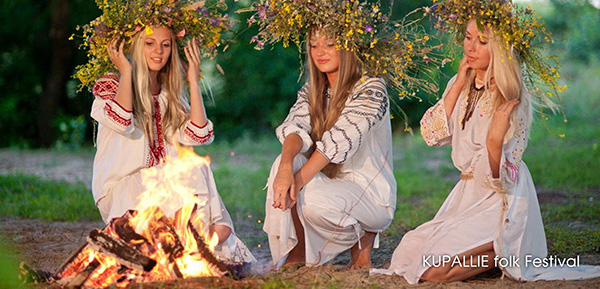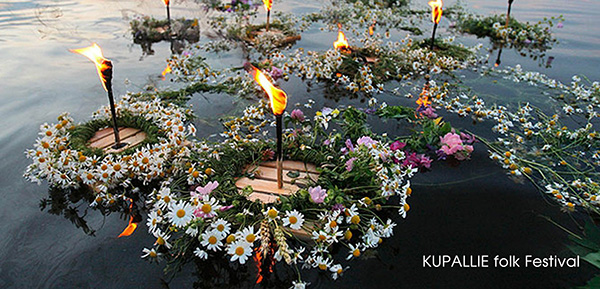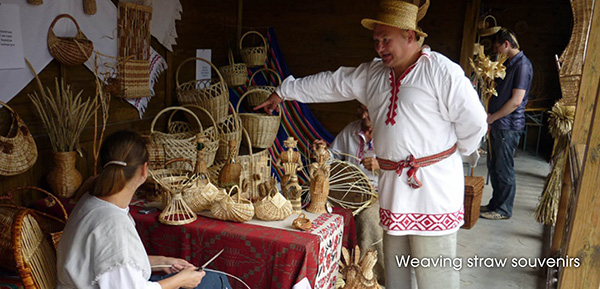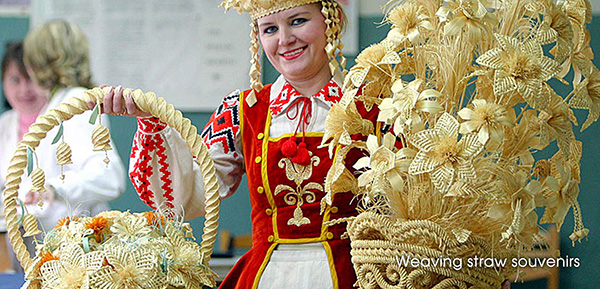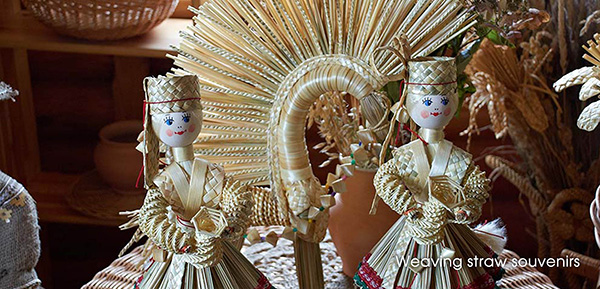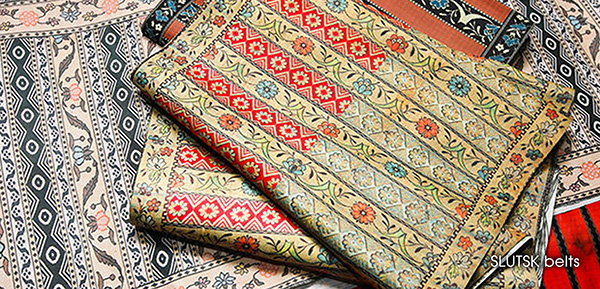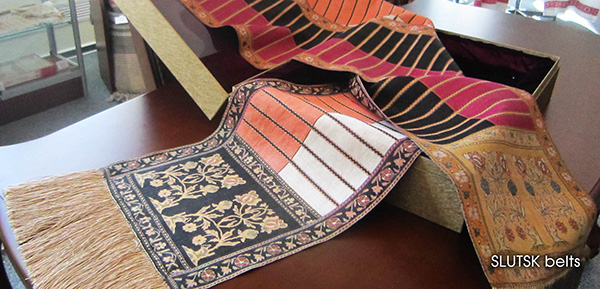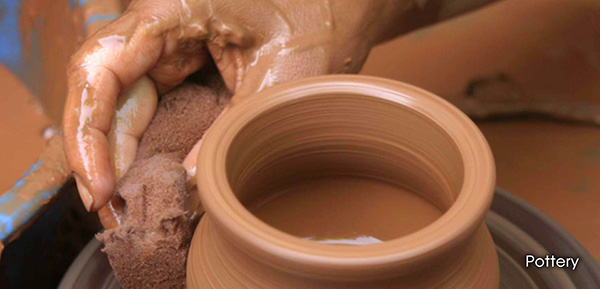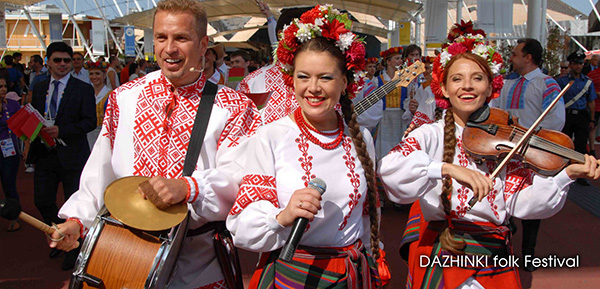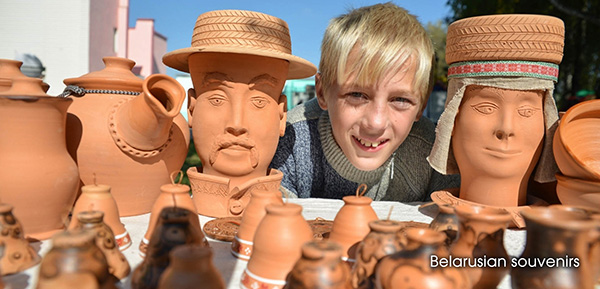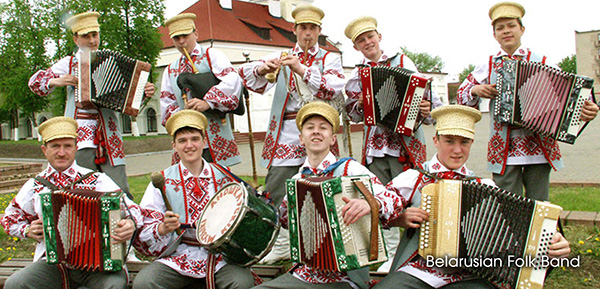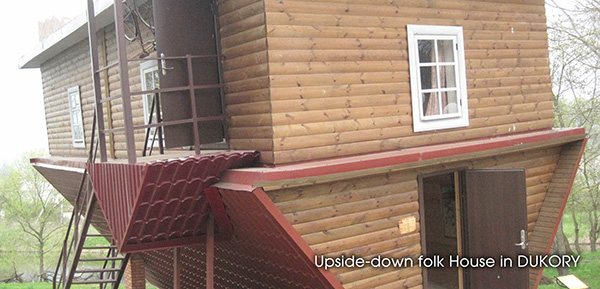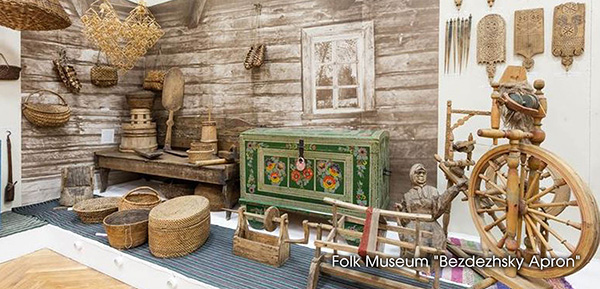Customs &Traditions tours
slider_Customs &Traditions tours
Belarus has its original cultural identity, which goes back to the times of the Grand Duchy of Lithuania, when Belarusians were called Litvins. We offer you to get acquainted with Belarusian traditions and customs, take part in traditional entertainments, listen to folk songs and learn to dance Belarusian dances, watch craftsmen at their work and even partisipate in making handcrafts of Belarusian souvenirs, we invite you to dine Belarusian cuisine and drink Belarusian beverages and hooch.
| Cinema Territory in Strochitsy Skansen Museum |
Belarus is not the country of well-developed cinematograph, but it is a good playing field for foreign film makers. Many Russian films and series and especially historical ones are produced in Belarus. In Strochitsy Skansen Museum near Minsk there is a vast territory of 153 hectares with the authentic folk villages of the 18-19th centuries. The folk houses and other buildings of that epoch were transported here from various Belarusian provinces and nowadays create a unique authentic atmosphere in one place. Like typical Wild West decorations in Hollywood film making studios, folk villages in Strochitsy Skansen Museum are typical natural decorations for slavonic films. All attributes of life in the villages are original, that helps create certain reality in cinema. Usually popular local folk festivals such as Kupalle, Maslenitsa, Calling for Spring, Pulm Sunday or Shchadrets (Christmas carols) take place here. The festivals are organized as great shows with folk fairs and traditional rites, that immerse tourists into the action. Here you can buy original Belarusian souvenirs, selling by craftsmen, and taste original Belarusian goodies and dishes. The territory of Strochitsy Skansen Museum is divided into three provinces: Central Belarus, Dnieperland and Lakeland. Every province has its own ethnic feature and history. There are nearly 40 historical objects in the Museum. As the territory of the Museum is rather large, that’s why it’s better to take a bicycle or a horse-drawn carriage ride. But if you prefer more capturing adventure, we advise you to take an avia tour over the Museum or a water excursion on a comfortable boat to view picturesque surrounding landscapes and water expanses of the local lake, created by the last glacier. For sure, visiting Strochitsy Skansen Museum will impress you much, and who knows, may be this travel will inspire you to make a film or at least a film of your incredible trip to the authentic Belarus.

| Upside Down Folk House in DUKORA |
“Dukorski maentak” (Dukora gentry estate) is one of the most unusual sights of Belarus. It is a historical and tourist center, founded in 2015. The ancient gate tower of the early 19th century miraculously survived in WW2 starts our journey. Here you will be told about the life of the Belarusian gentry and family secrets of the most famous dynasties of the past. One of them was Oginski dynasty who owned Dukora many centuries ago. You will see a flipped upside down house, where everyone can test its endurance. Magical forest of fairy tales, zoological garden, rope town for children, street of artisans, 400-year old oak, everything here creates a special atmosphere of the noble past. Come to Dukora and feel yourself the part of the story!

| Folk Crafts & Rural Life Museum in DUDUTKI |
The Museum of Folk Crafts & Rural Life is situated in the picturesque place of Dudutki near the river Ptich. The Museum is designed as a gentry estate of the 17th-19th centuries. Various folk crafts’ workshops, folk houses, stables, taverna and other estate facilities are situated on the territory of 162 hectares. The Museum first of all keeps the traditions of Belarusian folk crafts technologies, that’s why here you can see craftsmen at their work. At the bakery workshop you’ll see how a loaf is being baked; in the pottery workshop you can even try potter's skills of yours; you can be trained a blacksmith’s skills and have a chance to shape a horse shoe with your own hands. In the windmill of the 19th century you’ll see of how grain is being turned into flour. The visitors of the Museum are offered to taste typical local food such as lard, bread, onions, salted cabbage, old gentry vodka (hooch), traditional snacks, bread, cheese, butter and herbal tea. All treats are produced in the Museum’s workshops according to old recipes, using only natural ingredients. The other significant feature of the Museum in Dudutki is the collection of rear retro cars of the 20th century, that is one of a kind in the whole country. Horse riding or walks in a carriage will complement the feeling of being in the countryside. Embark an adventure to the old times with the Museum of Dudutki, and you’ll get an incredible weekend in the best Belarusian traditions!

| Entertaining Resort in KAROBCHITSY |
The Resort is located just 5 km away from the city of Hrodna. It is the best place to have an amazing weekend with friends or children. Fresh air on the bank of the marvelous pond and freshly prepared food on the fire in front of you will create for you -the atmosphere of a home in a countryside. There is an excellent park zone, stables and horse riding school for children, guerrilla (partisans) camp and a zoo on the territory of the resort. The Resort maintains Belarusian customs and traditions, organizing numerous cultural festivals. Here you also can taste the dishes of Belarusian cuisine. The restaurant and the cafe, which are designed and constructed as a Medieval Castle, the service staff dressed in the historical costume, the statues of animated cartoon’s heroes and the presence of king’s brougham enhance the feeling of being in a fairy tale. Old times coaches with cab drivers will take you to any part of the resort. A big children’s playground with a pirate ship, a castle and a big dragon will capture your kids for the whole day. Entertaining fairytale performances and shows are regular things here, and if there is no fairy tale in your life, come to Karobchitsy Entertaining Resort and you’ll find yourself in the center of a dream’s reality!

| The Art of Folk Weaving in BEZDEZH |
The Museum of Folk Weaving “Bezdezh Apron” keeps the unique collection of weaving, clothing and arts and crafts of the Western Palesse region. It has over 200 homespun aprons, none of which repeats the previous one. The exhibition demonstrates the interior of a Belarusian peasant house, decorated with peasant household items and patterns of folk clothing. One of the show-rooms is fully occupied by the exposition of aprons. If you are interested in the art of weaving, the “Bezdezh Apron” Museum is the very place you should visit and take a part of art in the peace of souvenir with you. The vast territory of the Museum is designed as a peasant dwelling house with outbuildings, courtyard and a farmstead, garden and a pond. The visitors will be offered to taste western Belarusian cuisine: home bread, lard, homesalted cucumbers, mushrooms from the barrel, makuha, draniki, nalistniki, potatoes in their jackets and many others. Entertaining part of the excursion includes a master-class of folk dancing for tourists and joyful folk singing. For sure, having come to Bezdezh, you’ll enjoy a day of a Belarusian peasant’s life, full of mirth, humor, songs and art!

| Slutsk Belts Manufacturing tour |
Slutsk belts are the national treasure of Belarus. They were a part of man's dress of priviledged gentry of the Polish-Lithuanian Commonwealth. Wearing Slutsk belts tied on the weist was the mark of nobility and wealth of their owner. The origin of Slutsk belts comes from the Osman Empire and Persia. First belts manufacturing appeared in the Commonwealth in 1758 in Slutsk. It was founded by Mikhail Kazimir Radziwill, the great Lithuanian getman. He invited there Turkish and Persian weavers, who trained local apprentices, and so the technologies were adopted. The belts were weaved only by men, it was considered to be a good luck. Women were not allowed to the process of manufacturing. Every belt was weaved of thin silk, golden and silver threads, had the lenth of 2-4,5 metres and the width of 30-50 cm. All sides of the belts were front sides. Usually the belts were belateral, but the most precious ones were four-sided. The patterns were designed by artists and contained oriental and popular local tunes, but all the time unique and exclusive. The cost of the belts varied from 5 to 50 ducats (15-150 golden roubles) and in some cases could reach 1000 golden roubles, that was equal to the annual income of the Commonwealth's officer. Regardless the belts were produced in Nesvizh, Warsaw, Krakow and other cities, they were popular as Slutsk belts, because Slutsk manufacturing was the most influencial and skilled in the state. Since the end of the 19th century Slutsk belts became objects of collecting. Original belts nowadays are in many world's museums as well as in private collections. Belarusian scientists studied old manufacturing technology of the belts and invented a unique weaving machine, that helped recreate exactly manufacturing process. 250 years ago one weaver could produce 2-3 belts in a year. Modern technology allows to produce 1 belt in 60 hours. The materials and techniques of the replicas are the same as in the 18th century. Because of the complicated manufacturing process Slutsk belts replicas are very expensive, but as the masterpieces of art they can be good investment. Their cost varies from $500 to $2500. They are produced only on pre-order. You can see original belts in the National Art Museum of Belarus in Minsk and in the Museum of the history of Slutsk belts in Slutsk. In Slutsk you can also buy replicas of the belts and other related souvenirs. Come to Belarus, touch the history of art and feel what is to be a Lithuanian magnat!



